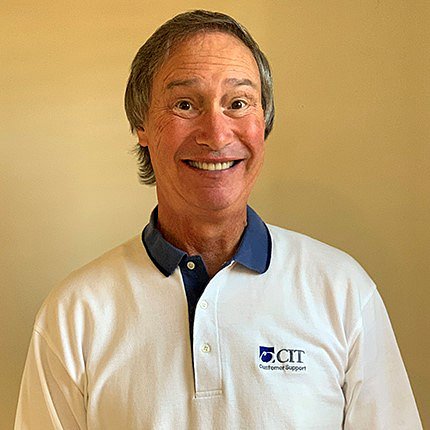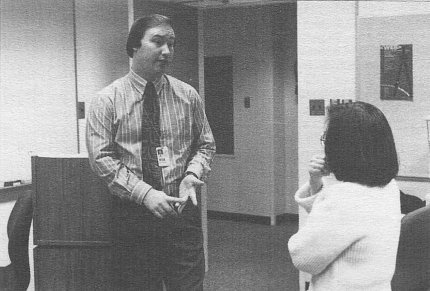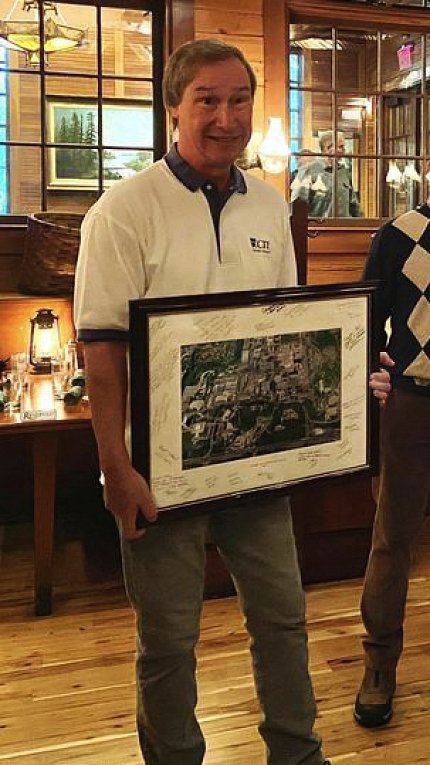Man Behind the Monitor
CIT’s McLean Retires After 27 Years at NIH

“How do you get good audio from a million-dollar cello?”
That’s one question Scott McLean (formerly Collins), Center for Information Technology (CIT) computer specialist, probably didn’t expect to hear when he joined the NIH VideoCast team when it launched in 2000. His NIH journey had started four years prior, when he joined the Division of Computer Research and Technology (DCRT) Technical Assistance Support Center (TASC), now known as the NIH help desk. Twenty-seven years later, he reflected on his journey as he prepared to retire recently.
McLean started his NIH career consulting with staff to resolve computing problems with TASC. He also became the go-to expert and instructor for the NIH PARACHUTE service, the precursor to VPN that supported as many as 5,000 off-campus dial-up users. He was also involved in the Y2K remediation process, in which all systems that used dates had to be checked to make sure they would continue to work when the year switched from 1999 to 2000.
After that, McLean took advantage of a new opportunity to support live streaming video from NIH servers to clients around the world over the internet. Before VideoCast, the only way for events to be broadcast was to use IPTV over the multicast network, McLean said, and there was no way to archive videos.
The start of VideoCast was “years before YouTube, and NIH led the way with early adoption and innovation,” McLean said. His role ensured day-to-day support for “hundreds of live events a year.”
He coordinated and monitored live video streams, edited the video footage and published the finished product in the archives as quickly as possible, usually within a few days after the broadcast. He was also responsible for post-production closed captioning.

The pandemic brought new challenges for the VideoCast team, he recalled. With maximum telework, all lectures, conferences and meetings that would normally be broadcast from physical rooms switched to virtual “overnight,” McLean said.
The virtual town halls were the first priority, especially in the early days of the pandemic. “I did whatever it took to finish editing those [and post them quickly],” he said, acknowledging that his work included some late nights.
McLean recalled many highlights in his years working with VideoCast. One of his top memories, he said, was “[helping to publish the web link of] live video from NIH Bethesda, Maryland via NASA Space Center Houston to the International Space Station for a real-time chat with Dr. Francis Collins and astronaut [Dr.] Kate Rubins…the enormity [of the experience] sunk in after watching Kate Rubins do a back flip in zero gravity during the interview.”

Many broadcast VIP visits also stood out to McLean, such as Jane Goodall, Maya Angelou, Barbra Streisand, Yo-Yo Ma (and his million-dollar cello), Katie Couric, the Dalai Lama, Alan Alda and Renée Fleming.
McLean took pride in his role of sharing science with the world. “I feel privileged working at NIH to support the mission and to serve the American public,” he said.
Being exposed to science every day also piqued his interest in some of the topics—one with a profound discovery.
McLean’s appreciation for the science he made accessible to the world also prompted an interest in his own genealogy. Revolutions in genetics and DNA testing allowed him to research his family history and trace his roots back to the Scottish Highlands. He also reverted back to his historic family surname of McLean in 2020 (before that, his last name was Collins).
Fittingly, he plans to travel to Scotland after retiring.
“It has been an honor and privilege to work so many years at NIH working with so many talented people supporting such incredible science,” he said. “I look forward to having free time to travel with my family, take up new hobbies and enjoying life to the fullest.”
